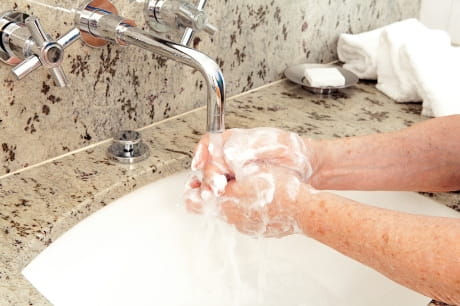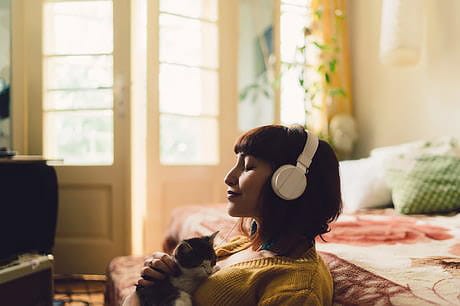What’s the difference between physical distancing and social distancing?
Social distancing or physical distancing: What’s the difference and which is best?
As we’re living the reality of the COVID-19 pandemic, we’ve been covering our mouths, washing our hands and practicing “social distancing.” But the conversation is shifting from “social distancing” towards “physical distancing.”
Why? Because of the unseen impact of social distancing and isolation on our mental health and emotional wellbeing. Knowing the difference can help us improve our mental health during these unprecedented times.
Social distancing vs. physical distancing
In the current context, social distancing refers to staying at least 6 feet away from people to help avoid getting sick and “flatten the curve” in the spread of COVID-19.
While “social distancing” is still widely used, it may be sending the wrong message and contributing to social isolation.
“Rather than sounding like you have to socially separate from your family and friends, ‘physical distancing’ simplifies the concept with the emphasis on keeping 6 feet away from others,” says Dr. Shahida Fareed, psychologist at Geisinger Grays Woods.
We’re fortunate to be in the age of technology where connecting instantly with someone on the other side of the country is possible. During times like this – of quarantine and isolation – it’s important we stay connected virtually with the people in our lives.
“Staying in touch with people feeds the human connection we all need to thrive daily, but physical distance is vital to slowing down the spread of the COVID-19 virus,” says Dr. Fareed.
Keep your distance but stay close
Taking the time to connect with friends and family to strengthen connections will help us get through this pandemic, but we need to be responsible about it.
“Remember, this distance means that you don’t gather in large groups, including extended family dinners, play dates and neighborhood basketball games,” says Dr. Fareed. “But that doesn’t mean you can’t stay connected in other ways, such as phone or video calls.”
Here’s how you can remain responsibly connected:
- Video chats and phone calls with friends and family
- Hiking while keeping your distance of at least 6 feet between people
- Game night with everyone you live with (if they aren’t sick)
- Virtual movie night with your family and friends (video chat or text while watching the same movie in your own homes or rooms)
- Exercise/yoga/mindfulness videos online to be physically active in the comfort of your own home
- Video games that allow you to connect with people around the world
How to practice physical distancing the right way
If you do need to go out — which many of us continue to do for our weekly shopping trip, our jobs or to pick up medications — follow these guidelines to protect yourself and others.
Limit your time in public. If you need essential items, like groceries or medication, it’s fine to go out but it’s important to limit your trips. Instead of going to the store every few days, try to go once a week or, if it’s available in your area, use grocery delivery or pick up services.
Keep your distance. Some stores have used tape to mark off distances of 6 feet in checkout lines. Whether or not these markers are present, be mindful of keeping your distance from the person in front of you.
Bring hand sanitizer. Before and after you enter a store, use a hand sanitizer that’s made with at least 60% alcohol. If you don’t have any on hand or can’t find some in the store, you can make your own! You can make a simple hand sanitizer spray with distilled water and rubbing alcohol. You can also add some essential oils if you have them on hand.
“Sanitizing before you go in will help prevent spreading any germs or viruses you may be carrying and sanitizing after you leave will help you prevent spreading any viruses you may have come into contact within the store,” says Dr. Fareed.
Also, if the store offers sanitizing wipes at the entrance, use them to wipe down your cart or basket before you start shopping.
Wash your hands. Whenever possible, opt for soap and water instead of hand sanitizer. While hand sanitizer is a great option when you can’t get to a sink, thorough handwashing is the best way to prevent the spread of viruses.
Cover your mouth. When you sneeze or cough – even if you think you aren’t sick – cover your mouth with a tissue or the inside of your elbow. If you use a tissue, throw it away immediately and wash or sanitize your hands.
No matter what you call it, taking preventative measures and keeping your distance to help slow the spread of COVID-19 will help you protect yourself, your loved ones and everyone in your community.
Next steps:
Visit our online Coronavirus Resource Center
Coronavirus FAQs

Telemedicine video visits
See your doctor from the comfort of home — from routine care to specialty care
Get virtual care nowCOVID-19 updates: Visit Geisinger's Coronavirus Resource Center for the latest information and helpful resources.



